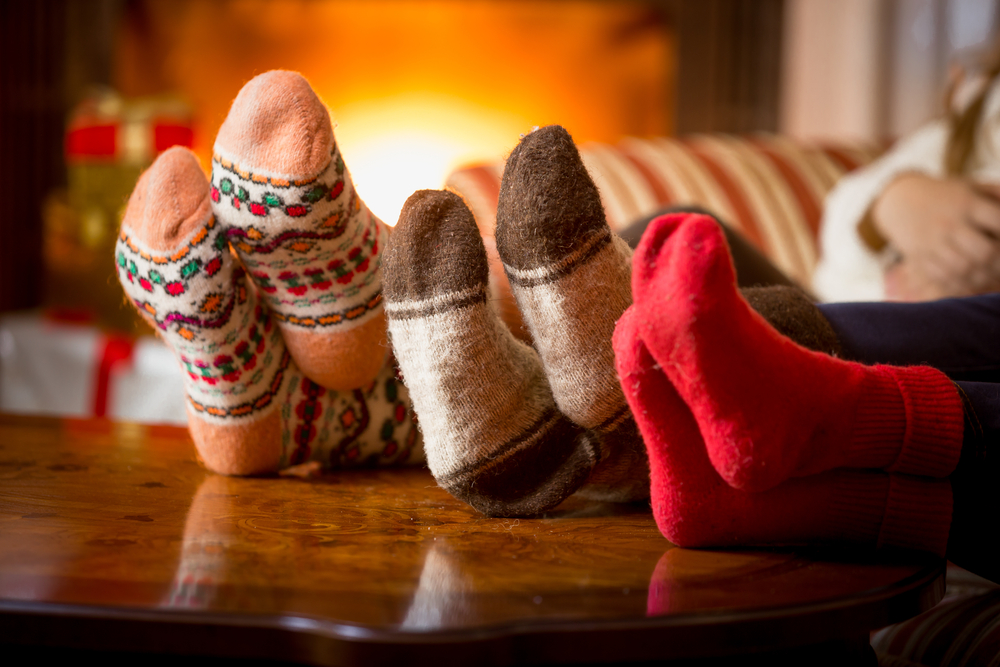What is Hygge?
Hygge (pronounced hoo-gah) is a Danish word that roughly translates into English as ‘cosiness’. It originates from the Norwegian word for ‘wellbeing’ and is believed to be loosely connected to the English word ‘hug’. In essence, hygge means creating a homely, warm atmosphere and enjoying the simple things in life with good people around you. Technology and hectic schedules can leave you feeling constantly ‘switched on’. Hygge is about switching off, celebrating the little things and enjoying the serenity of the present moment. Hygge first appeared in Danish literature towards the end of the 18th Century and the Danes have embraced it ever since. Denmark is often regarded as the happiest nation in the world and for good reason; they prioritise relaxation and take the time to appreciate simple moments, like family meals, visiting friends, enjoying a hot chocolate or sitting by the beach. They find ways to incorporate hygge into ordinary routines so that it becomes a natural part of daily life rather than a planned or stressful event.
How to Hygge
Hygge is a pretty hard concept to describe because it’s so abstract. It could be the absence of anything distracting, irritating or emotionally draining, and the presence of gentle, soothing and comforting things. Some of the most common examples include candlelight, snuggling under a blanket, enjoying a hot drink, looking through a family photo album or watching a film by the fire. Hygge works best when you’re in a small yet cosy space, as the idea is to relax and feel as snug as possible, forgetting life’s worries. It’s about togetherness, relaxation, indulgence, warmth and comfort.
The high season of Hygge
The high season of hygge is Christmas. Danish winters are known to be long and dark, and so the Danes fight the darkness with their best weapon: hygge, and the millions of candles that go with it. With so many cold, dark days, the simple act of lighting a candle and enjoying a cup of hot coffee in the morning can make a huge difference to one’s spirit. During these cold winter months, it can be especially important to be kind to yourself and not to deny yourself the little things that make you happy. Hygge also promotes the separation of material wealth and wellbeing; after our basic needs are met, more money doesn’t always mean more happiness, but rather, we should focus on what brings us a better quality of life. Christmas is the perfect time to embrace this mentality, when the emphasis on gift-giving threatens to overshadow the value in the little things that matter.
Personal wellbeing during the winter months
As the winter chill continues to get even colder by the day, it is important to be aware of the effect it can have upon your mental wellbeing. Most of us are affected by shorter, darker and colder days that make you want to eat more and sleep for longer in winter. Similarly, most people would agree that they are more likely to feel cheerful and energetic when the sun is shining. Hygge by its very nature is the perfect tool to battle winter blues. When the weather is frightful and our wallets are feeling the pinch, it is especially important to embrace proactive and preventative interventions that can bring warmth, comfort and simple pleasures to our lives when we need it the most.
Top tips for Hyggeing your life
- Lighting lots of candles or burning incense
- Taking a lunch break away from your desk
- Getting cosy under a duvet or by the fire
- Enjoying feel-good food, such as porridge
- Running hot baths or taking a long shower with your favourite pampering products
- Dress for the weather; wear your favourite Christmas jumper or bobble hat
- Drink hot chocolate with marshmallows and cream
- Make some time for yourself, such as cooking your favourite food or booking a hair appointment
Seasonal Affective Disorder
Seasonal Affective Disorder (SAD) is a form of depression that people experience during a particular time of year. Those who experience SAD will encounter much greater changes to their mood and energy levels and it can have a significant impact on day-to-day life. SAD can also compound symptoms of existing depression that you might already be experiencing throughout the year.
“As winter fast approaches we head towards what a lot of people consider to be the most depressing months of the year. Once Christmas has been and gone, we are often hit with phrases like “January Blues” and “Blue Monday”. For some people, this is just a temporary blip in the calendar as we wait for spring to return, however for others, it can feel like yet another uphill struggle to contend with alongside other presenting issues already present burdens. While there is never a miracle cure, there is a lot we can do to help, and I would like to remind anyone suffering during this time we are here and that you are not alone.”
Bod Cantwell, Head of Counselling. While some people find hygge to be an effective tool to battle the winter blues, one size does not fit all, and others may require greater levels of support in order to look after their wellbeing during the winter. If you are suffering with SAD or believe someone else is and would like to find out more about what support is available, get in touch with MIND or HA | Wisdom Wellbeing.




